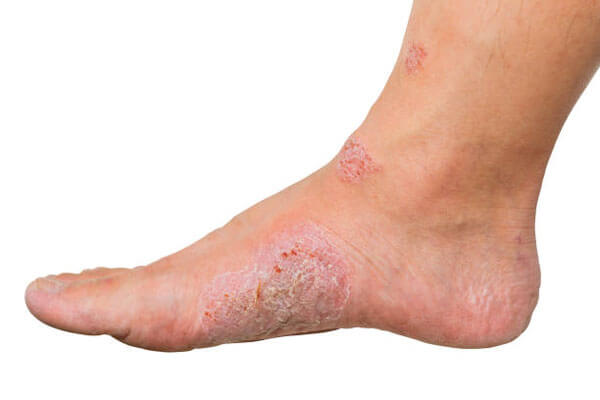Diabetic foot problem
Patients with uncontrolled diabetes are prone to several complications due to persistently high sugar levels in the blood. One such common complication is the diabetic foot, which is the major cause of amputation in diabetics.
What is diabetic foot problem?
If diabetes is not managed properly, it can lead to certain foot problems. There are two primary foot issues linked to uncontrolled diabetes:
Diabetic neuropathy: Diabetes may cause damage to the small blood vessels that supply the nerves. The nerve damage that occurs in the foot may compromise the sensation of extreme temperatures and also cause pain. As a result, diabetic patients may be unable to feel pain, heat, or cold sensations, increasing their risk of cuts, blisters, and sores.
Peripheral vascular disease: Diabetes can lead to a decrease in the blood flow to the foot. This prolongs the time it takes for any injuries or sores to heal, which raises the possibility of ulcers and gangrene, or tissue death, in the area with restricted blood flow.

What are the symptoms of diabetic foot problem?
The symptoms may vary among individuals depending on the issues experienced at a particular time. However, the common symptoms may include:
- Numbness or tingling sensation in the feet
- Loss of sensation
- Blisters or other wounds
- Temperature changes in association with skin discoloration
- Painful tingling
- Red-colored streaks
- Wounds with or without drainage
- Staining on the socks
The following symptoms in the patient indicates infection and the need for immediate medical care:
- Fever and/or chills
- Uncontrolled blood sugar
- Redness
- Rigors
- Shock
What are the causes and risk factors of diabetic foot problem?
The main cause for diabetic neuropathy is uncontrolled blood sugar levels. High blood sugar levels, when present for prolonged periods, can damage the walls of the small blood vessels, decreasing the oxygen and nutrient supply to the nerves. This can lead to nerve damage reducing the sensation in the feet.
Poor blood flow in association with chronically high blood sugar levels can lead to the death of tissues in the arms and legs.
Risk factors for diabetic foot problems include:
- Smoking and alcohol abuse can lead to damaged blood vessels and nerves and can also worsen blood-flow related problems.
- Certain genetic factors can increase the likelihood of developing nerve damage.
- Kidney diseases can lead to the build-up of toxins in the blood and can result in nerve damage.
- Obese people with a body mass index (BMI) greater than 24 are found to be at higher risk of diabetic neuropathy.
How is diabetic foot problem diagnosed?
Usually, a naked eye examination can reveal the presence of any sores, blisters, or other signs and symptoms of a diabetic foot problem.
To check for a lack of sensation, the doctor will lightly touch six of the 10 toes using the index finger. If the patient can feel sensation on at least 5 out of the 6 toes, then the sensation is said to be fine. However, when the patient cannot feel sensation on at least 2 toes when the specified 6 toes are touched, then it is considered impaired sensation.
Additionally, one or more of the following tests may be advised:
- Nerve conduction studies to check the conduction of electrical signals through the legs
- Quantitative sensory testing to check how the nerves respond to temperature changes and vibrations
- Filament test to test the sensitivity of skin to touch
What are the treatment options?
Treatment is based on the severity of the condition and can range from non-surgical methods to surgical methods.
Initially, the patient may require non-surgical methods such as:
- Cleaning of the wounds and dressing them regularly.
- Advising the use of immobilization devices such as total contact cast or partial contact casts.
- Observing the gangrenes on the toes closely until they fall off by themselves (self-amputation) due to lack of blood supply.
If the above non-surgical methods are not effective in treating diabetic foot problems, then the following surgical interventions may be needed:
- Removal of the dead or decaying tissue
- Amputation of a single toe or sections of foot, and in severe cases, partial amputation of the leg
- Endovascular surgery to place stents and keep the blood vessels open
- Arterial bypass surgery to improve flow to the foot in case of peripheral vascular disease
Outlook/prognosis/Prevention
Taking proper care of the feet helps prevent the diabetic foot problems in diabetic patients. Tips to prevent diabetic foot are as mentioned below:
- Maintain the blood glucose levels within the recommended range by following the instructions regarding nutrition, medication, and exercise
- Wear proper footwear, socks, and stockings that fit well to protect the feet from damage
- Maintain proper blood flow to the feet by taking measures such as moving the ankles regularly, wiggling the toes, etc.
- Check for the presence of sores, blisters, redness, or other problems every day
- Check the toenails once in a week. Take proper care of toenails to prevent ingrown toenails
